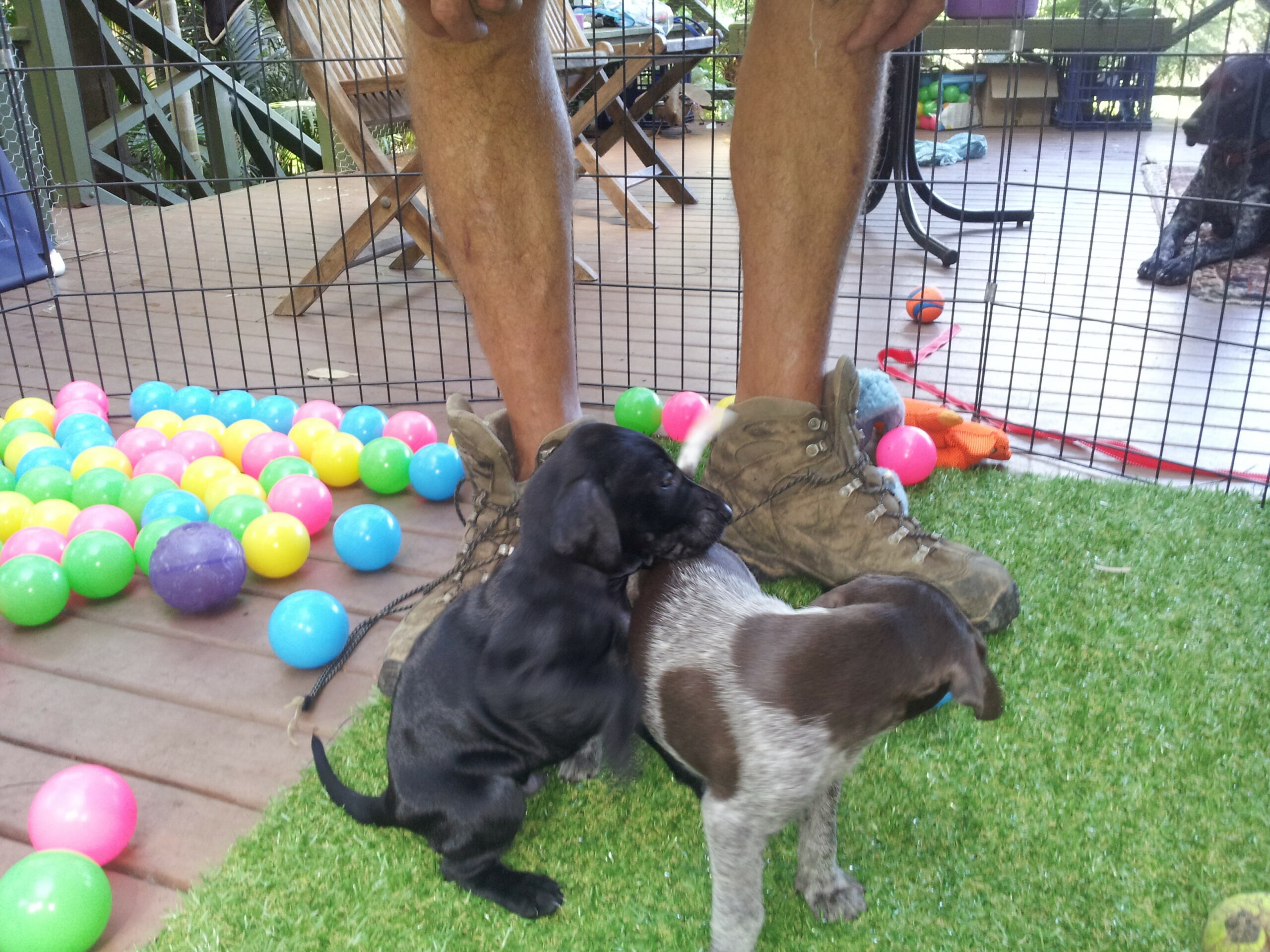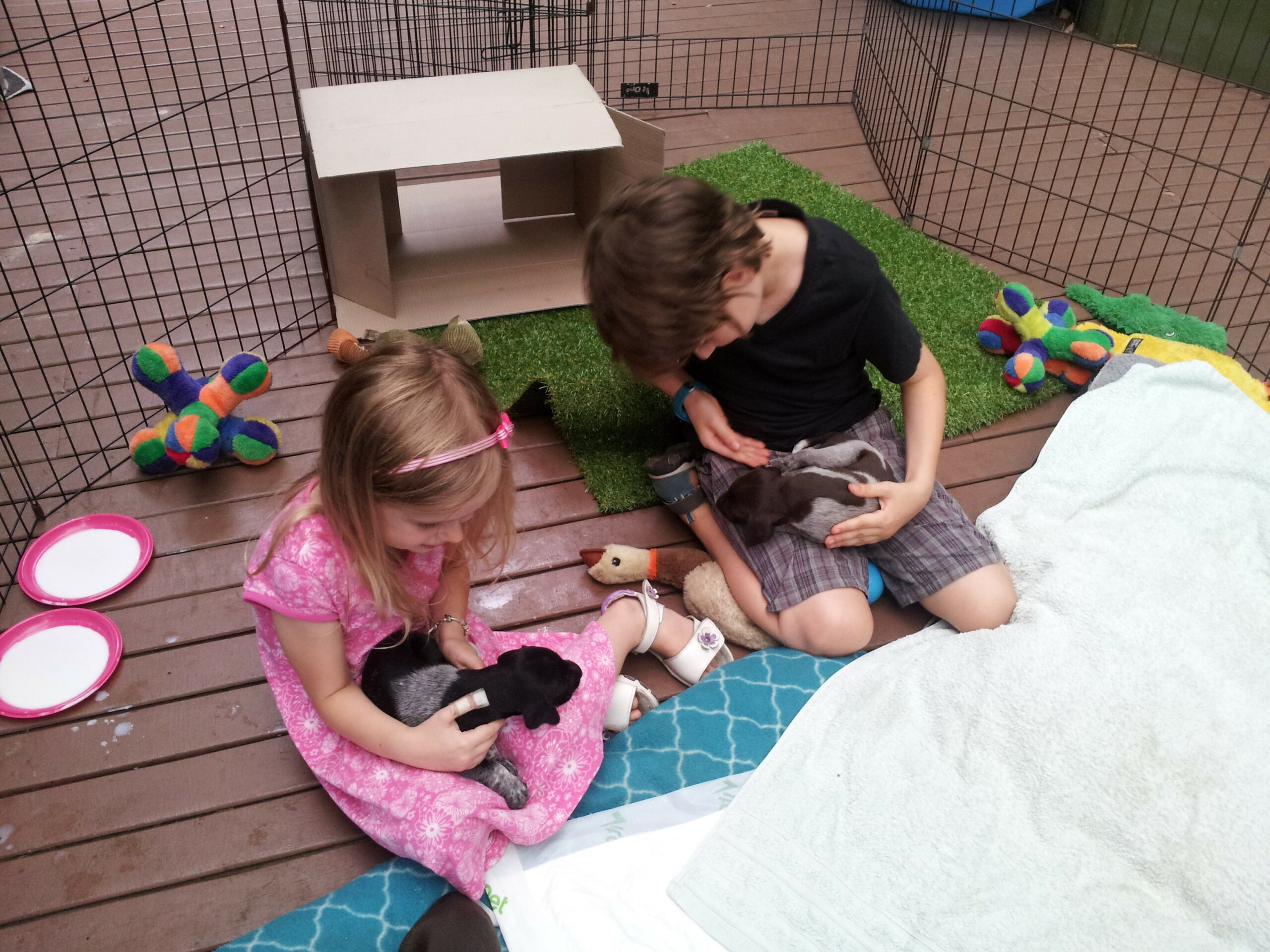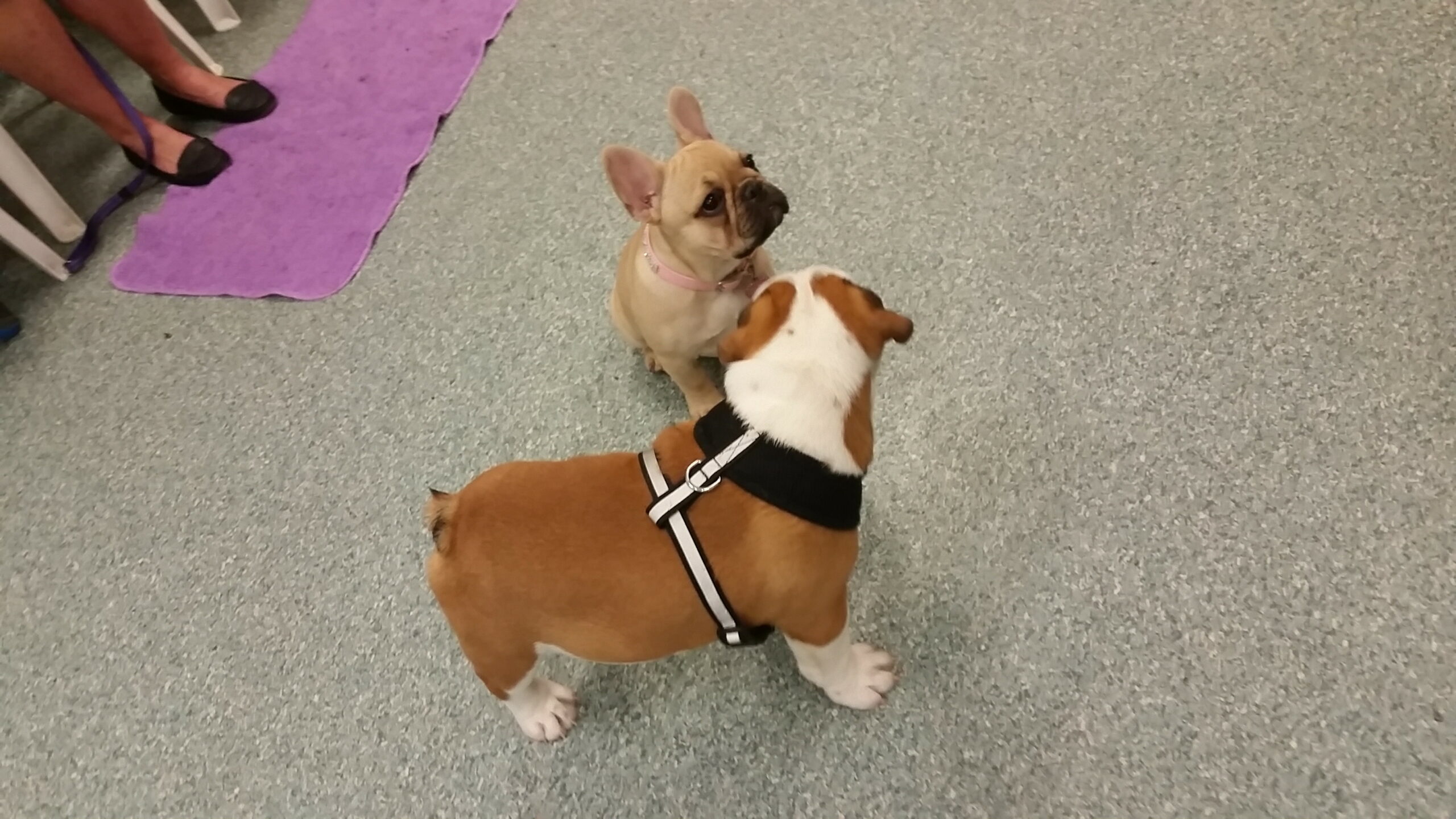Barks Blog
Socialize Your Puppy but Let Him Play, too!

Fifty years ago not too many trainers or owners talked about socialization. Not because puppies did not need it, but because for the most part puppies ‘self-socialized’, they wandered and roamed the neighborhood, accompanied children to school, hung out with other dogs, sometimes got into trouble with one of them, occasionally a child got bitten or a dog hurt by a car. Even 20 years ago back in Switzerland our dog would go to work with my husband, roam the streets, spend time with strangers, steal sandwiches and come back when it was time to go home. He got picked up by well-meaning people occasionally and once by police. It was no big problem, no fines either and it was a different time.
Do not get me wrong, I do not advocate puppies to roam and wander the streets. Things have changed dramatically and most dogs are much more than a pet today. They are a family member and the thought of them being unsupervised out and about is too stressful for most responsible dog owners. However, on the other side, dogs are not allowed anywhere unless on a leash and with their owners these days. This makes socialization very important and more difficult.
We probably all agree that early stimulation and socialization is beneficial for the development of our puppies. Proper socialization is the most important task when raising a well-adjusted dog. You can teach an old dog a new trick but if the short window of socialization has closed we are always playing catch up.
Socialization at a basic level is respondent conditioning – creating an association between two stimuli, in the case of puppy socialization hopefully a positive one. Most will also agree that the most important window of opportunity is between about 4 weeks to 16 weeks. After that the window of opportunity starts to close and often closes quickly. A properly socialized puppy is more likely to perceive the world as a safe and fun place. Whereas an under socialized puppy could be fearful of new things and might end up being cautious or even anxious.

Breeders have to play an important role and more and more breeders are really on the case. Puppies are born in family homes and exposed early to the normal noises and coming and goings of busy households. They invest a lot of time and effort in early handling, socializing their puppies to a wide range of stimuli, including strangers, other animals, surfaces and more. They also create a stimulating environment with environmental enrichment for their puppies, where puppies can freely explore and investigate in their own time and pace, interact and manipulate. This contributes to puppies being more inquisitive, better able to cope with stress and able to solve problems. Most good breeders will also start early training.
Responsible owners will keep socializing once they have brought their new puppy home. However, in addition to lack of exposure there is another way to create a fearful puppy: Inappropriate exposure. If we are not careful we might create negative association and sensitize puppies and make them scared.
Imagine this scenario, a well-meaning mum takes her brand new puppy to see her daughter play soccer, pops the leash on and goes to the park. Her daughter’s entire team runs up to the puppy and tries to pat. The puppy might feel trapped but the leash prevents her to back off and she might get really scared by this overwhelming experience. The puppy now has a bad association with the lead, open space, girls of a certain age, screaming children, and more.
Socialization has to happen at the puppy’s pace and the puppy has to be able to make a choice. If a puppy decides not to approach a certain stimulus then we need to accept that. There is nothing wrong with encouraging but under no circumstances should the puppy be forced into it. Create a positive association with fun play, interaction, tasty treats, cuddles and pats.
Puppy pre schools are a great opportunity to socialize your puppy to a wide range of people and environments. It is also the place to set owners up for proper training and help with trouble shooting.

There can be a saturation point however, where it all just becomes too much, if there is no choice anymore and the puppy cannot proceed at her own pace. This can happen in a group situation where well-meaning owners and a bit of peer pressure sends the puppy over the edge. So a word of caution there you do not want to scare or sensitize your puppy.
A puppy class can only provide a certain amount of socialization, maybe 5 %, the rest is homework.
However one important aspect of a well run puppy school should be socialization with other puppies. It seems this has ‘gone out of fashion’ a bit, at least in the Australian context and it baffles me.
Most dog owners with the appropriate information can socialize to people, surfaces, noises and environments but who has access to other puppies of a similar age? Hardly anyone! Even if a puppy will never go to an off leash area, they will meet dogs in social settings and need to be able to interact appropriately. A well run puppy pre school is often the only place where a puppy can safely meet other puppies and practice appropriate body language.
Most puppies love to play. They need to learn to interact and meet other puppies of different sizes, temperaments and looks.
On leash interaction causes the exact problem we try to prevent with supervised and moderated off leash interaction. On leash puppies cannot approach in a circular motion, leashes get tangled and head on greetings are the outcome. It also creates the wrong expectations. If I walk my dog on leash down to the local shops I do not want her to interact and try to play with every dog she meets. I want her to walk with and pay attention to me.
Of course a lot of puppies are excited off leash and will greet head on but very often and after the initial exuberance they will display more appropriate body language, especially if the play is professionally moderated.
I also strongly believe that puppies who spend the entire time in puppy pre school on leash and are prevented from interacting with the other puppies can either become frustrated and might start lunging and barking when meeting other dogs on leash or worse become fearful of other puppies.
And like any other part of socialization there is only a limited window of time and you cannot and should not take your puppy to the dog park. There are many reasons for not taking your puppy to the off leash area too early: The puppy is not fully vaccinated, the dog park is unpredictable and potentially dangerous for a puppy or a small dog, a lot of adult dogs do not like puppies in their face and one bad experience can cause a lot of damage! A puppy pre school without moderated off leash interaction is in my opinion a lost opportunity.
To raise a well-adjusted dog, super socialize your puppy. Do more than one puppy pre school, visit moderated play groups, take the puppy to new environments on daily basis, introduce friendly children, adults on an ongoing basis and make it a pleasant and positive experience. Let the puppy proceed at her own pace and let her make choices.
Despite the window of opportunity closing you have to keep it up so the ‘socialization muscle’ stays strong, fit and healthy! You will need to expose your teenage dog on an ongoing basis and in a positive way to new experiences and even mature dogs benefit from social outings. I recommend taking a young dog up to about a year to new and different places two to three times a week, once they are over a year and up to about 3 years, take them to a new place or for a new experience once a week. Just to make sure! And don’t forget socialization is not just exposure but associating the experiences in a positive way.

